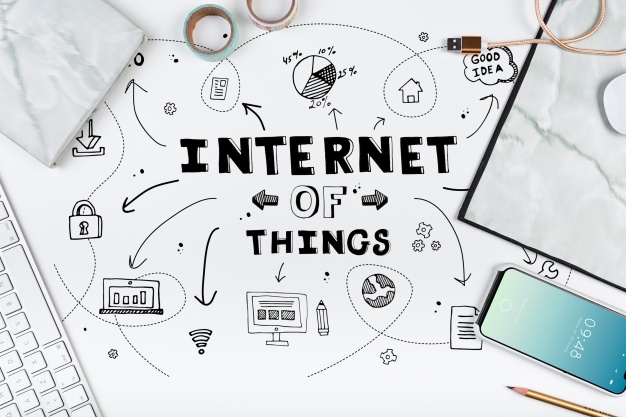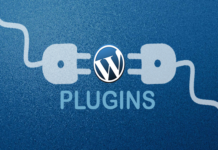The world is moving towards a digital revolution. As more and more of our life is transitioning to the online world, especially during the lockdowns that we’ve faced over 2020, people are starting to realize the power of digital technology. Computers can achieve many things that are beyond the computing power of the human brain. These tasks help human life through automation in many different ways. But what if there was a way that all of these separated digital tools could be integrated into one network that can fulfill a multitude of roles. This is where the concept of the Internet of Things comes in. Our article will tell you about the Internet of Things is our future, how it came to be, and where it is being adopted for great benefit.
Table of Contents
What is the Internet of Things?
The Internet of Things as a concept wants to bridge the gap between the physical and the digital. The things that it speaks about include sensors, charts, hardware, and software that collects and exchanges data between multiple digital systems. It is concerned with the process of taking real-world information and using it digitally in a network of multiple devices, each with its own unique roles.
The Internet of Things only became a possibility because of multiple technologies converging and intersecting with each other. Data analytics, machine learning, sensor systems, and the internet, all came together to create the Internet of Things. Great examples of the Internet of Things for the average consumer can be to imagine a digital ecosystem at their home. Their mobile phone, television, lights, and appliances are all connected to each other and operate in sync. All actions are only a touch away from over central control that is your smartphone.
The History of IoT
The idea of the Internet of Things was conceptualized all the way back in 1982 when Coca-Cola installed a vending machine that has the capability of recording its own inventory and communicating this to a user using the internet. This was the first time that the internet was used in a manner that integrated it into the real world. After this research papers were published by Mark Weiser that talked about ubiquitous computing, which laid down the groundwork for IoT. In 1994, the idea that data packets could be used for digitally integrating anything from homes to factories was floated by Reza Raji.
The person responsible for creating the term Internet of Things was Kevin Ashton from Proctor and Gamble, in 1999. He envisioned a world where even computers could use radio waves to communicate and perform everyday real-life tasks. The actual Internet of Things is believed to be born somewhere around 2008 and 2009, because the ratio of things or devices to people became 1.84 in 2010, meaning that there were more digital devices than people now.
How Does the IoT System Work?
The IoT ecosystem consists of smart devices that use embedded systems like sensors, processors and some communication hardware. This is used to collect, send and act according to the data that is acquired from the environment. The IoT devices share their sensor data by connecting to an IoT gateway or any other edge device to analyze it. These devices can also communicate with other related devices and act on all the information that they get from each other. The devices do not require human intervention, although people can interact with the devices. Usually, people interact with these devices to set them up or give instructions or access the data.
Use Cases for IoT
The Internet of Things can be utilized for a plethora of cases. Some of the fields where it has become very popular include:
● Smart Homes
These are the most popular applications of the Internet of Things. Smart homes feature a connected ecosystem of multiple smart devices that are a part of your house. This can include phones, televisions, speakers systems, security systems, air conditioning, and most electronic devices. The benefit of having a smart home is that control over everything is integrated and can be accessed from anywhere in the house, without the need for any buttons as they have voice recognition too. Amazon Echo and Google Home are very popular Smart Home options.
● Smart Cities
Similar to a Smart Home, a Smart City works by integrating administrative civil work with internet technology. This means that traffic, policing, and emergency monitoring can all be done from several decentralized units with perfect communication. They can eliminate a response lag for any kind of situation. The Internet of Things not only makes civil administration smooth but also allows the infrastructure to improve through modernization. Barcelona is one of the first big cities to start adopting a Smart City framework.
● Industrial Internet
Also known as Internet 4.0, Industrial Internet is concerned with integrating the working of heavy industrial machinery utilizing the power of digital software. This means that you can have greater control over the functions of your machinery. By having individual pieces of machinery communicate and coordinate with one another, production work becomes smoother. Having smart sensors also allows for timely maintenance when it is needed and helps to isolate and keep other parts safe in case of an emergency or accident.
● Healthcare
Many people have discussed the potential of using the Internet of Things to create a cloud-based database that unites the medical data of many patients. By using IoT-based healthcare you can buy medicines online by coordinating with your doctor in real-time. The database can also provide instantaneous information on the medical history of patients that can save lives in emergency situations.
● Supply Chain Management
The Internet of Things can be utilized to revolutionize the world of supply chain management. By having internet connectivity you can keep a live and up-to-date record of the logistics of your goods. This means you can easily track where your goods are in transit, their quantity and if they have faced any damage. This empowerment in being able to track and assess supply chains gives businesses and organizations a level of control that they earlier never heard. Optimization of supply chains can end up saving huge amounts of money, and hence its proper management is a very crucial task. IoT has a lot to offer in this field, which is why more and more people are considering it.
Conclusion
The IoT technology can help people around the world live and work smarter. People can also gain good control over their lives by automating their homes and offices to make life simpler and easy. This is a smart way to become more efficient and get the work done. This technology is useful for business also since it can provide real-time information on how the systems work. It can also deliver deep insights on most things like the performance of machines to supply chain and logistics operations. The IoT also enables different companies to automate their processes and reduce labour costs. This technology can help to save a lot of time and support in cutting down on waste and improving service delivery.
The Internet of Things is definitely becoming a superstar technology. However, there are still some concerns of security as such networks can be prone to cyber-attacks and breaches of privacy. Ensuring that these security breaches are minimized is the way to ensure the maximum success for the Internet of Things, as it will surely become the next big revolution of the future.












